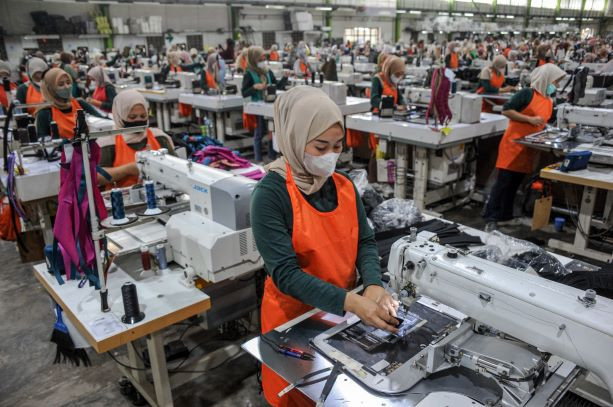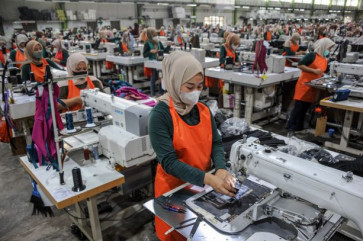Popular Reads
Top Results
Can't find what you're looking for?
View all search resultsPopular Reads
Top Results
Can't find what you're looking for?
View all search resultsDeindustrialization in Indonesia: An opposite viewpoint
Even during the peak of the COVID-2019 pandemic in 2021 the manufacturing sector’s contribution to the gross domestic product (GDP) still increased from Rp 2.76 quadrillion (US$190.3 billion) in 2020 to Rp 2.94 quadrillion or about 19 percent in 2021.
Change text size
Gift Premium Articles
to Anyone
T
he observation that Indonesia is experiencing deindustrialization is groundless. On the contrary, Indonesia has actively promoted industrial development and the manufacturing sector has experienced significant growth in recent years. The government has implemented a variety of policies and initiatives to attract both domestic and international investments, resulting in the establishment of new industries and the expansion of existing ones.
The decline of industrial activity in a country or region is referred to as deindustrialization. It is frequently associated with the relocation of manufacturing and industrial production to other nations, resulting in employment losses, decreased productivity and a decline in GDP growth. While deindustrialization is a concern for many nations, in my view Indonesia is not experiencing deindustrialization but rather a different industrial trajectory.
The manufacturing sector has been the largest contributor of value added to the country’s gross domestic product (GDP) since 2010. Even during the peak of the COVID-2019 pandemic in 2021 the manufacturing sector’s contribution to the GDP still increased from Rp 2.76 quadrillion (US$190.3 billion) in 2020 to Rp 2.94 quadrillion or about 19 percent in 2021.
Indonesia's manufacturing sector has experienced substantial growth in recent years, contributing to the expansion of the economy as a whole. This growth indicates that the nation is not deindustrializing, but rather undergoing structural changes in its industrial landscape.
The government has enacted many policies to create a more enabling environment for attracting foreign investment to bolster the growth of the manufacturing sector. These policies have encouraged multinational corporations to establish manufacturing facilities in Indonesia, thereby creating employment opportunities and expanding the variety of industrial products. Foreign direct investment in the manufacturing sector increased from $156 billion in 2012 to $497 billion in 2022.
Numerous industries, including automotive, electronics, textiles and manufacturing, have found a home in the country. In addition, the diversification of manufacturing activities demonstrates the nation's capacity to adapt to shifting market demands and engage in production with high-added value. The Indonesian government has been effective in integrating the country into the global production chain and hubs for certain high-value export and domestic products.
Typically, deindustrialization is accompanied by substantial job losses and growing unemployment rates. In Indonesia, however, the manufacturing sector has been a major driver of employment creation. Employment opportunities for low-skilled workers have increased due to the establishment of industrial parks and the expansion of manufacturing clusters.



















